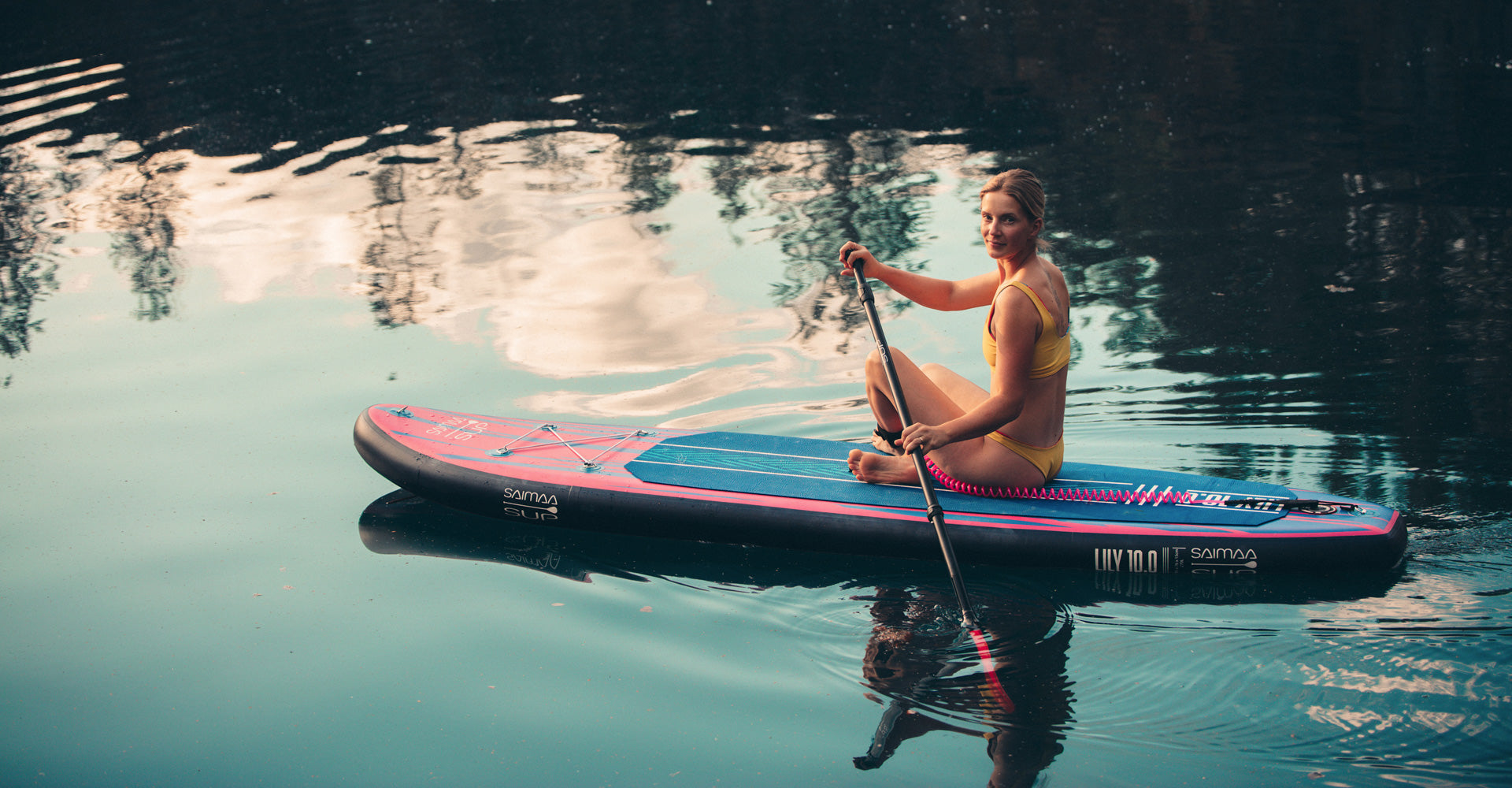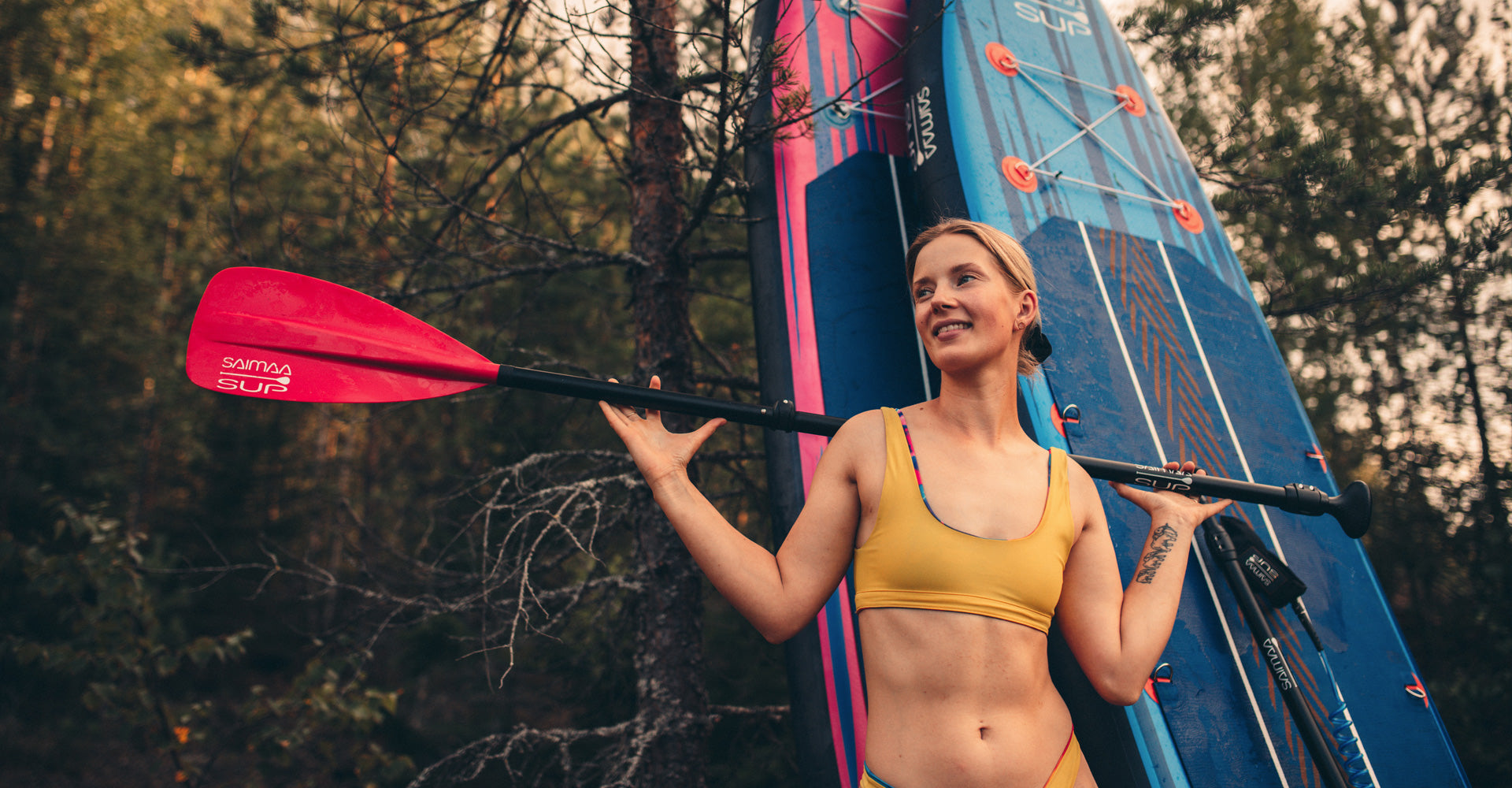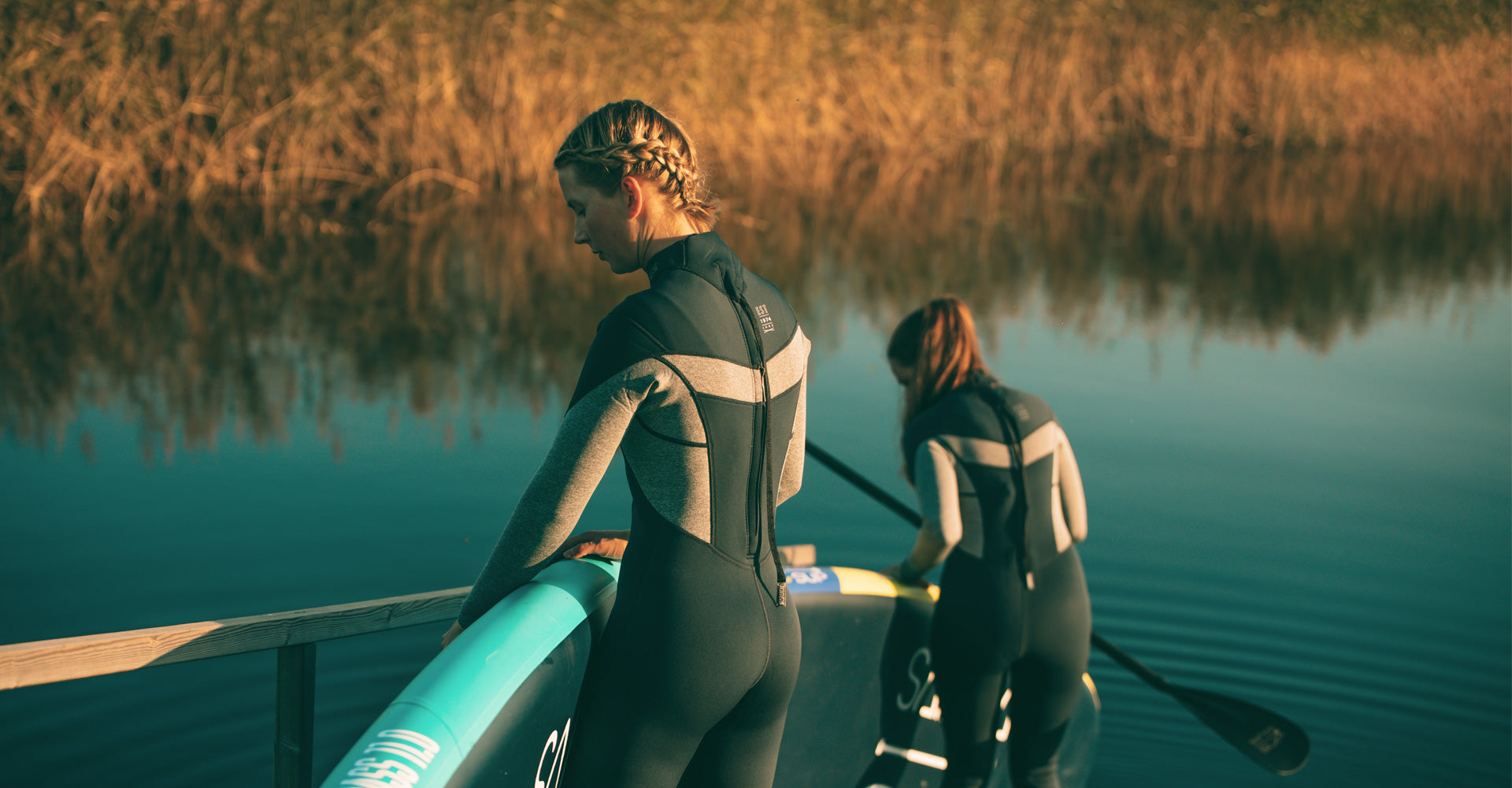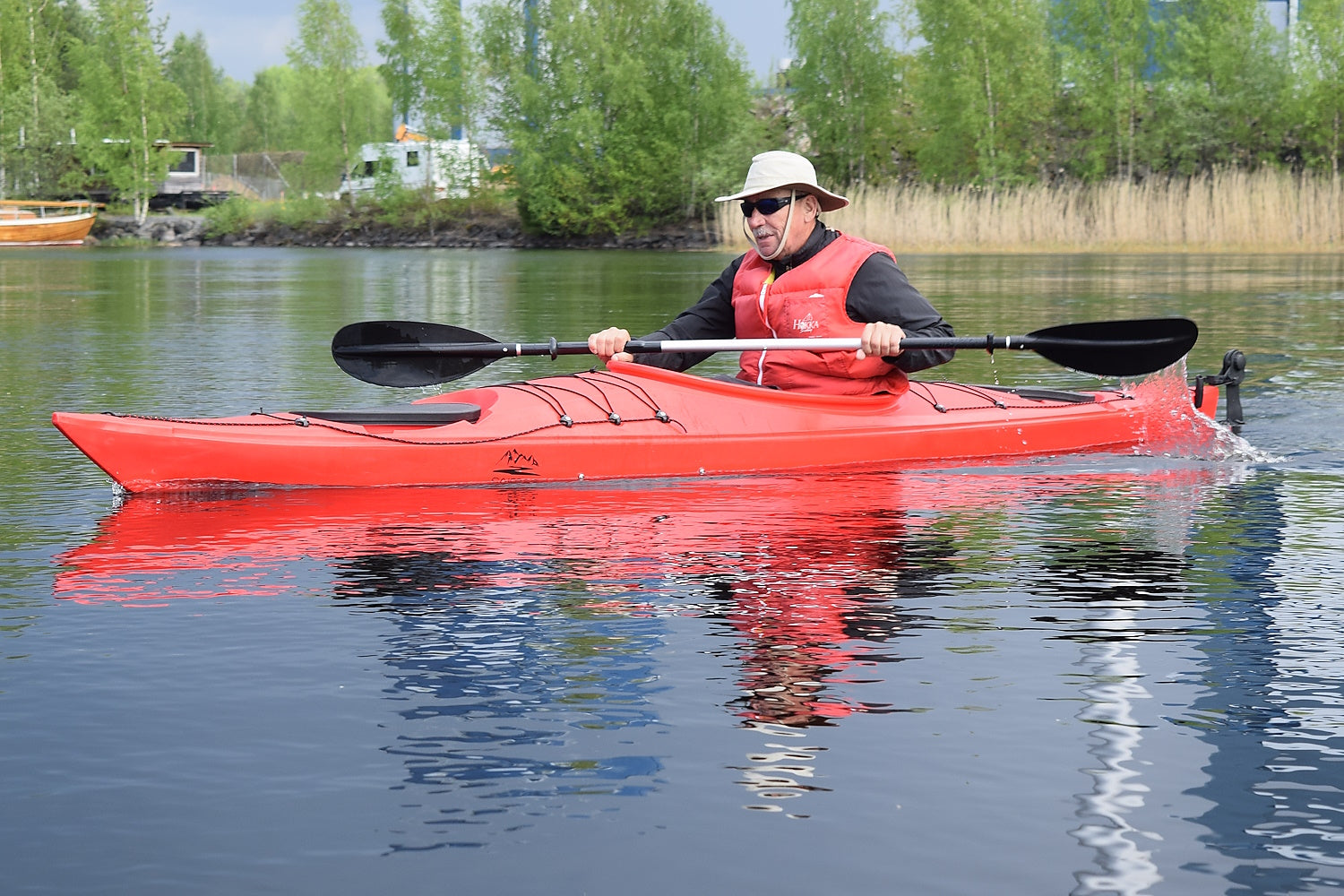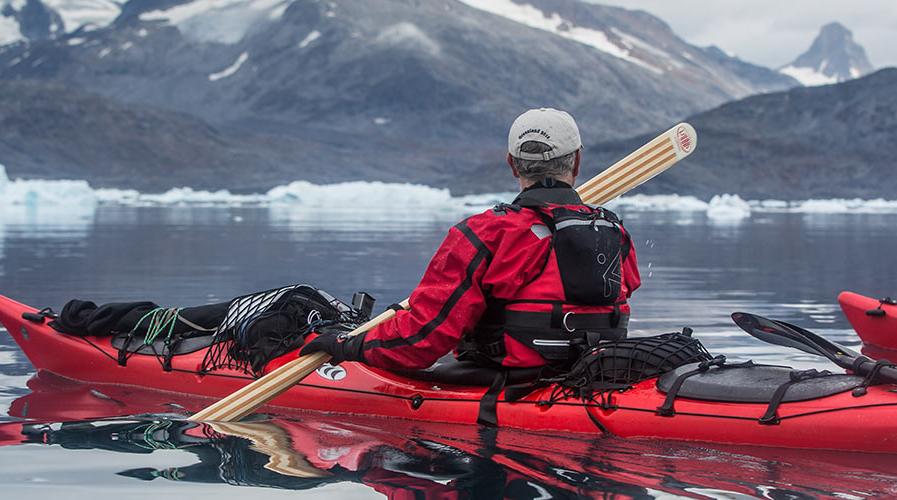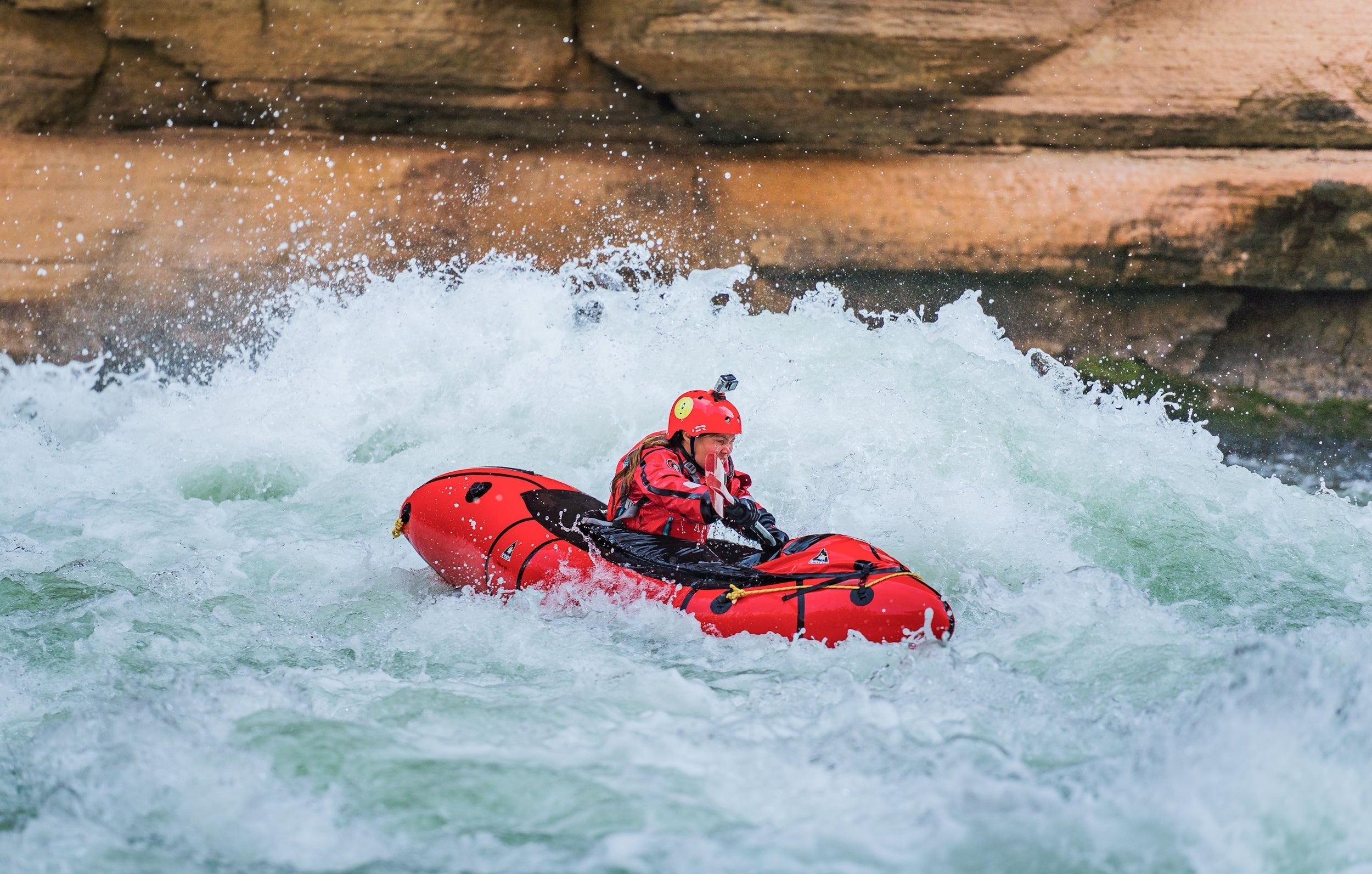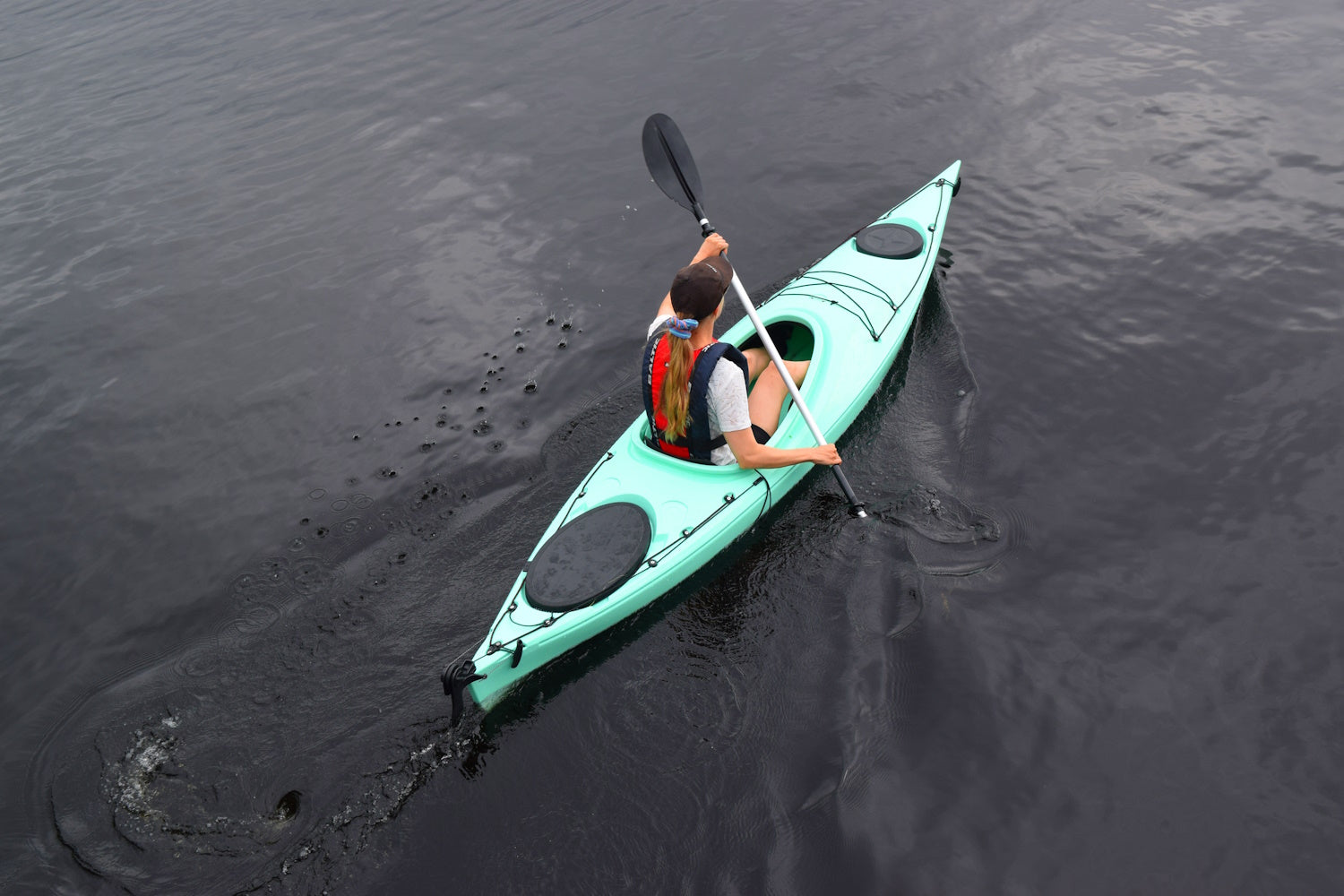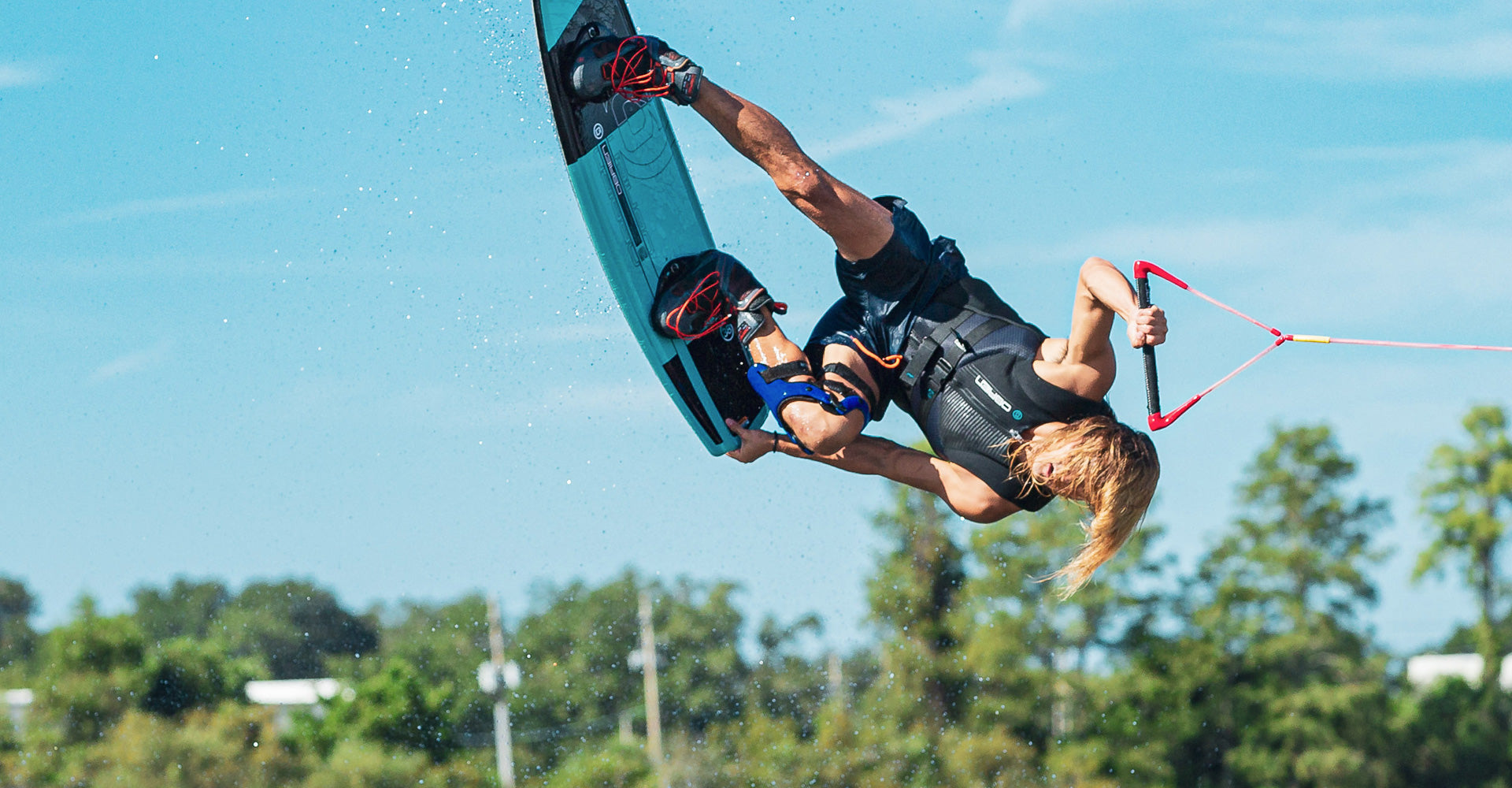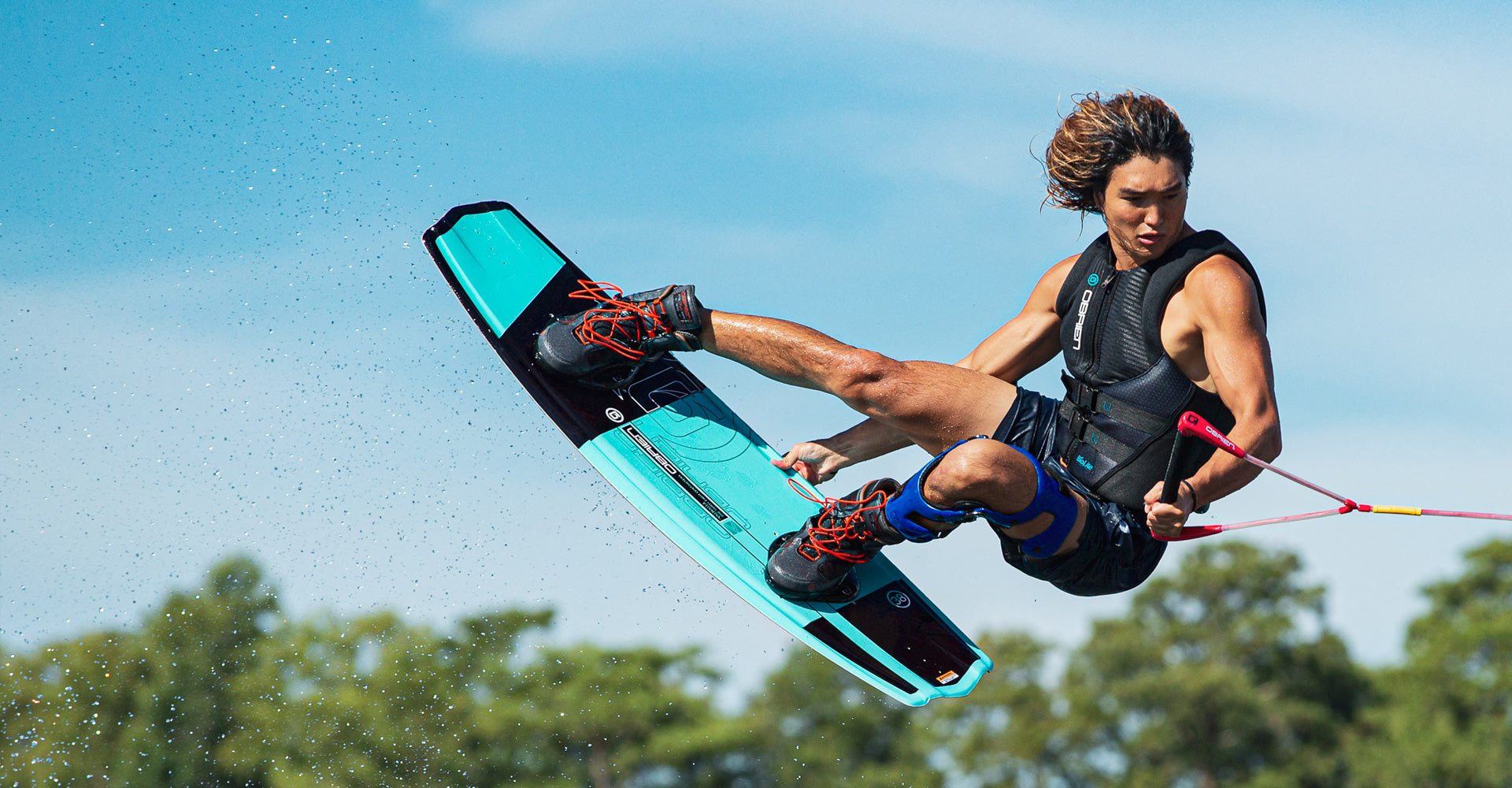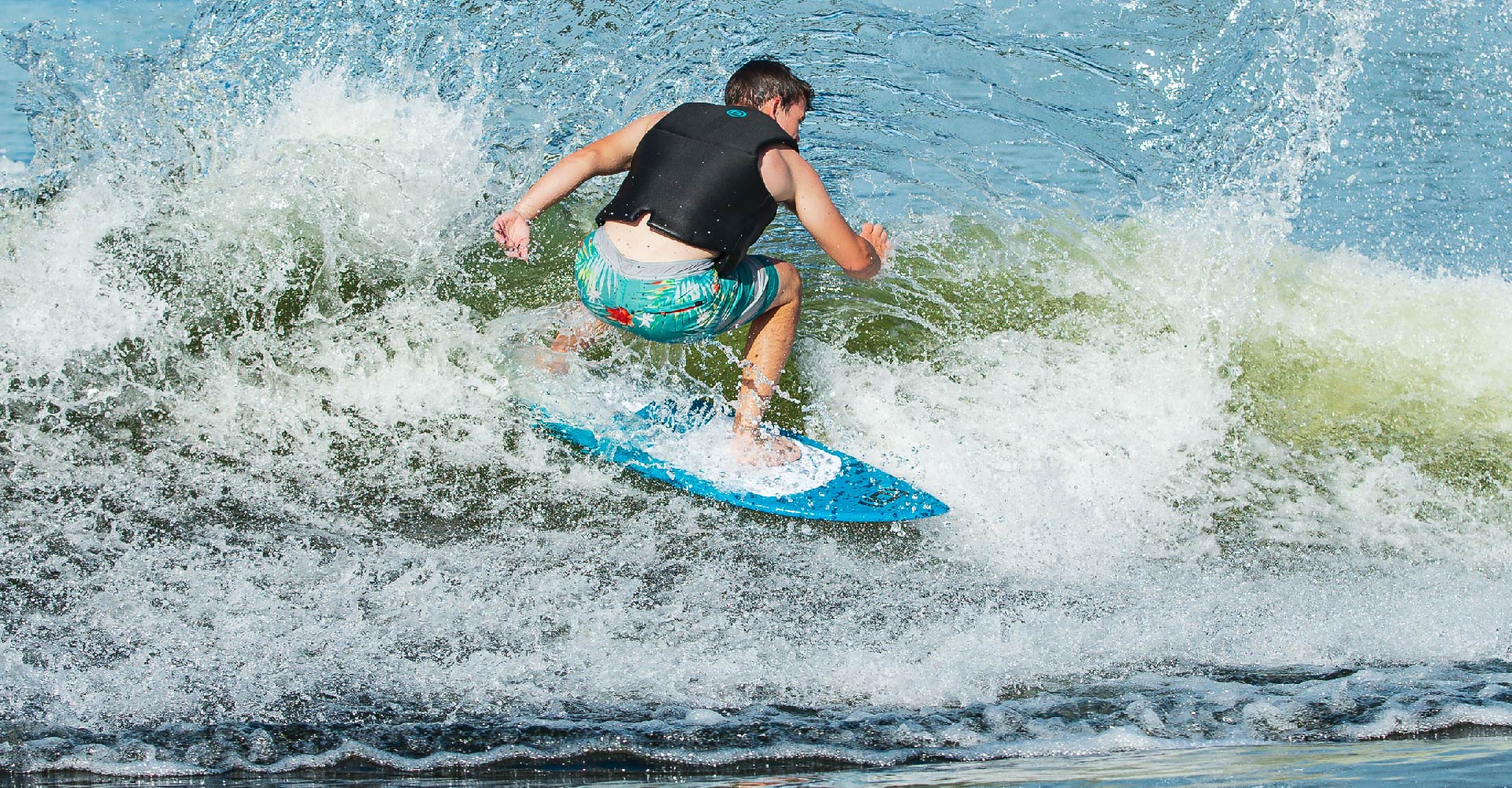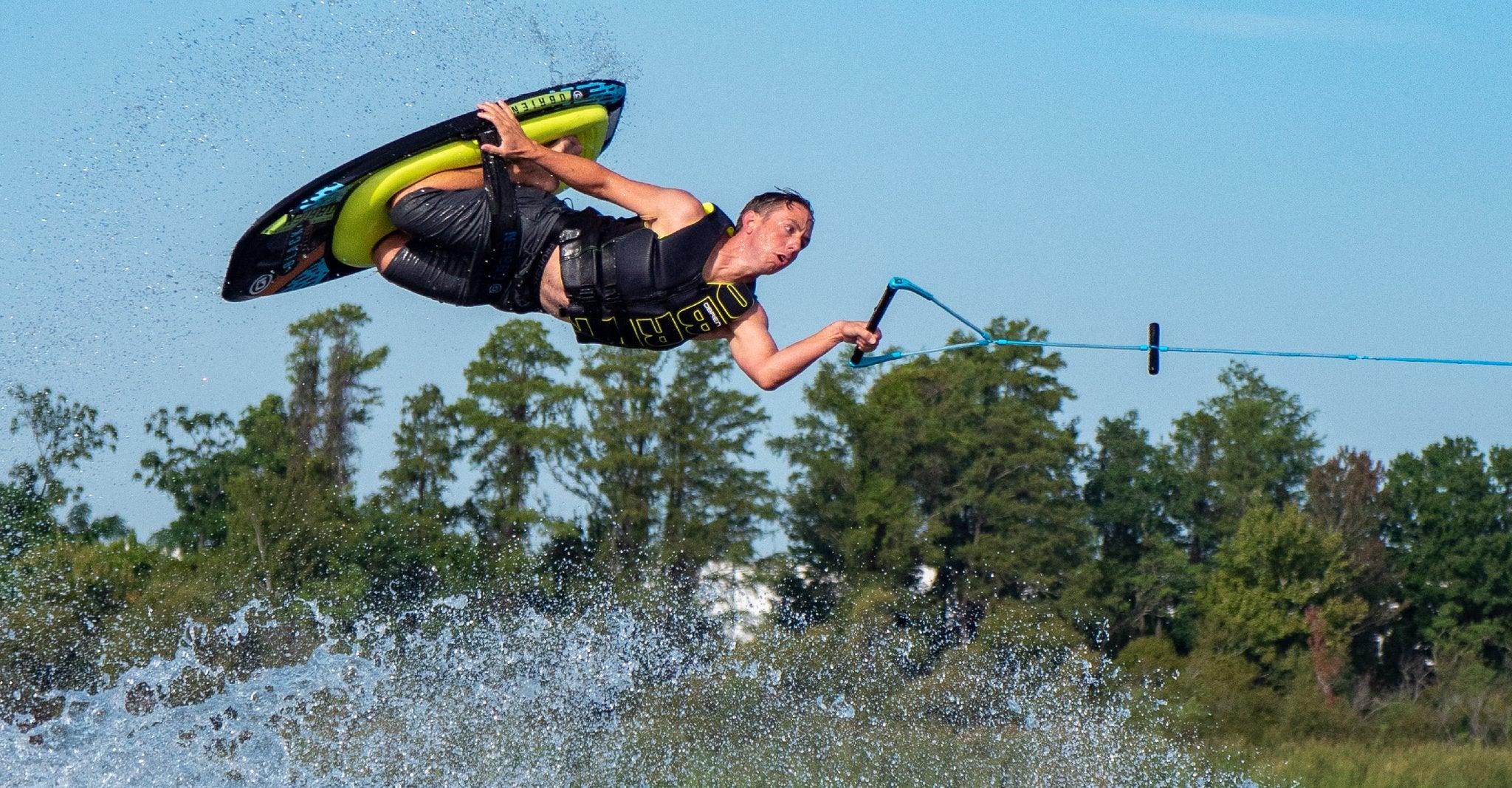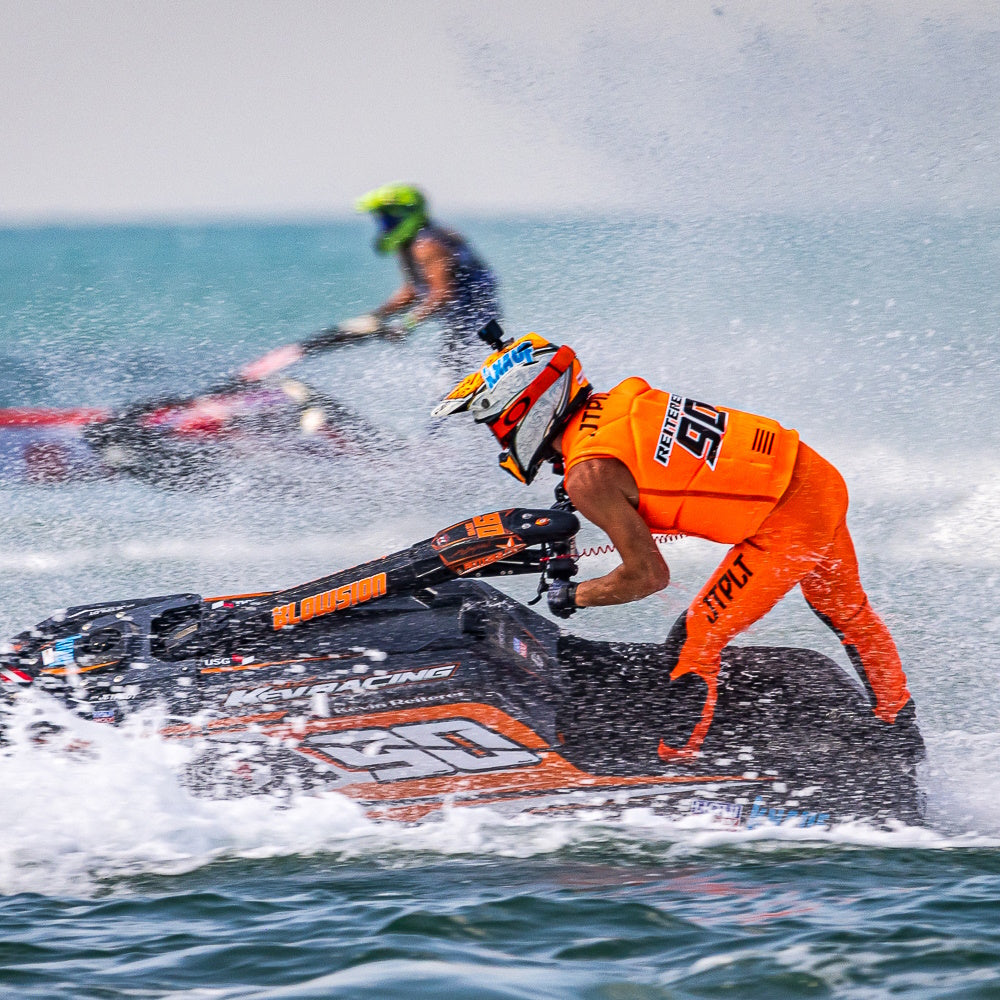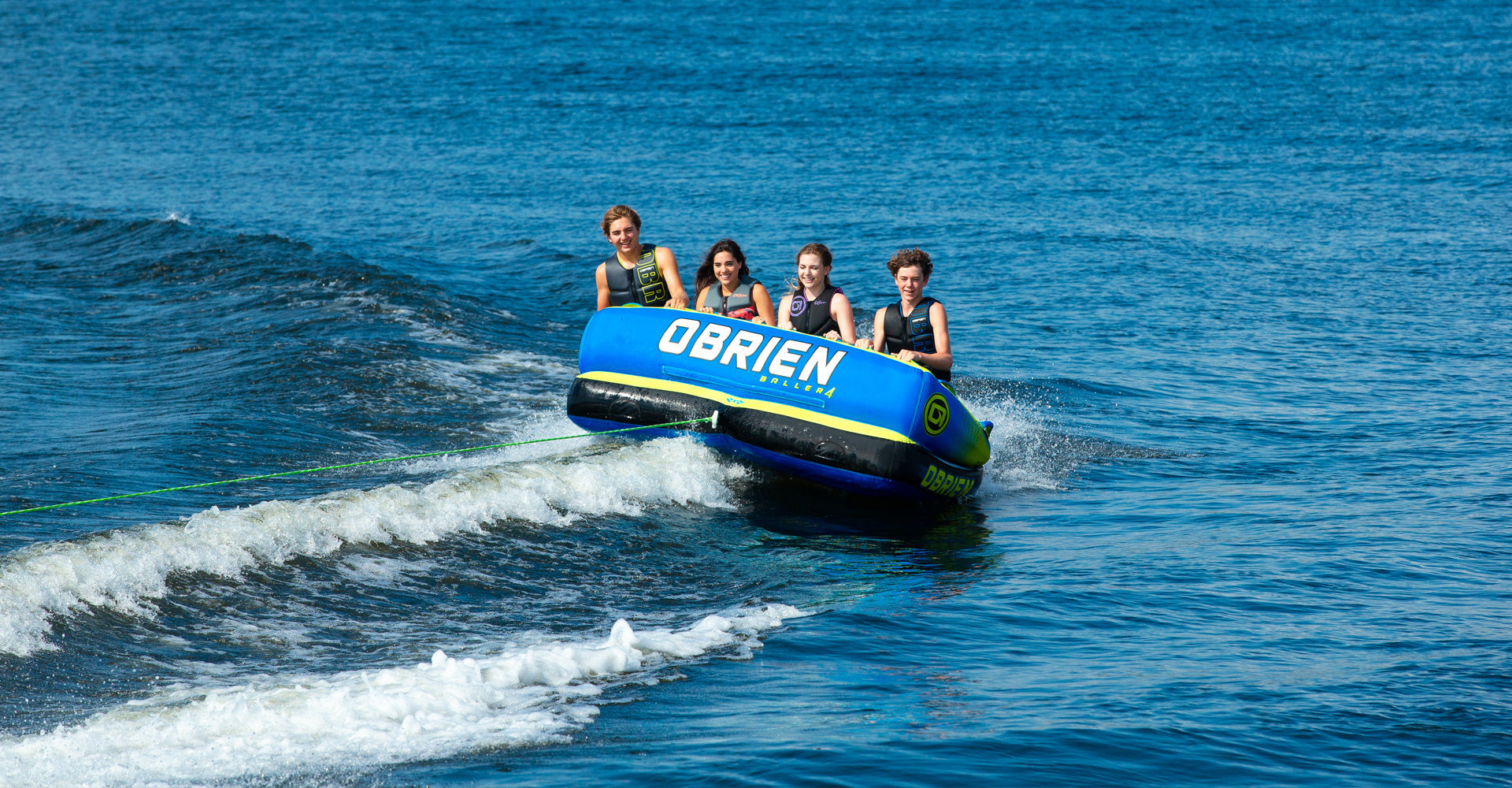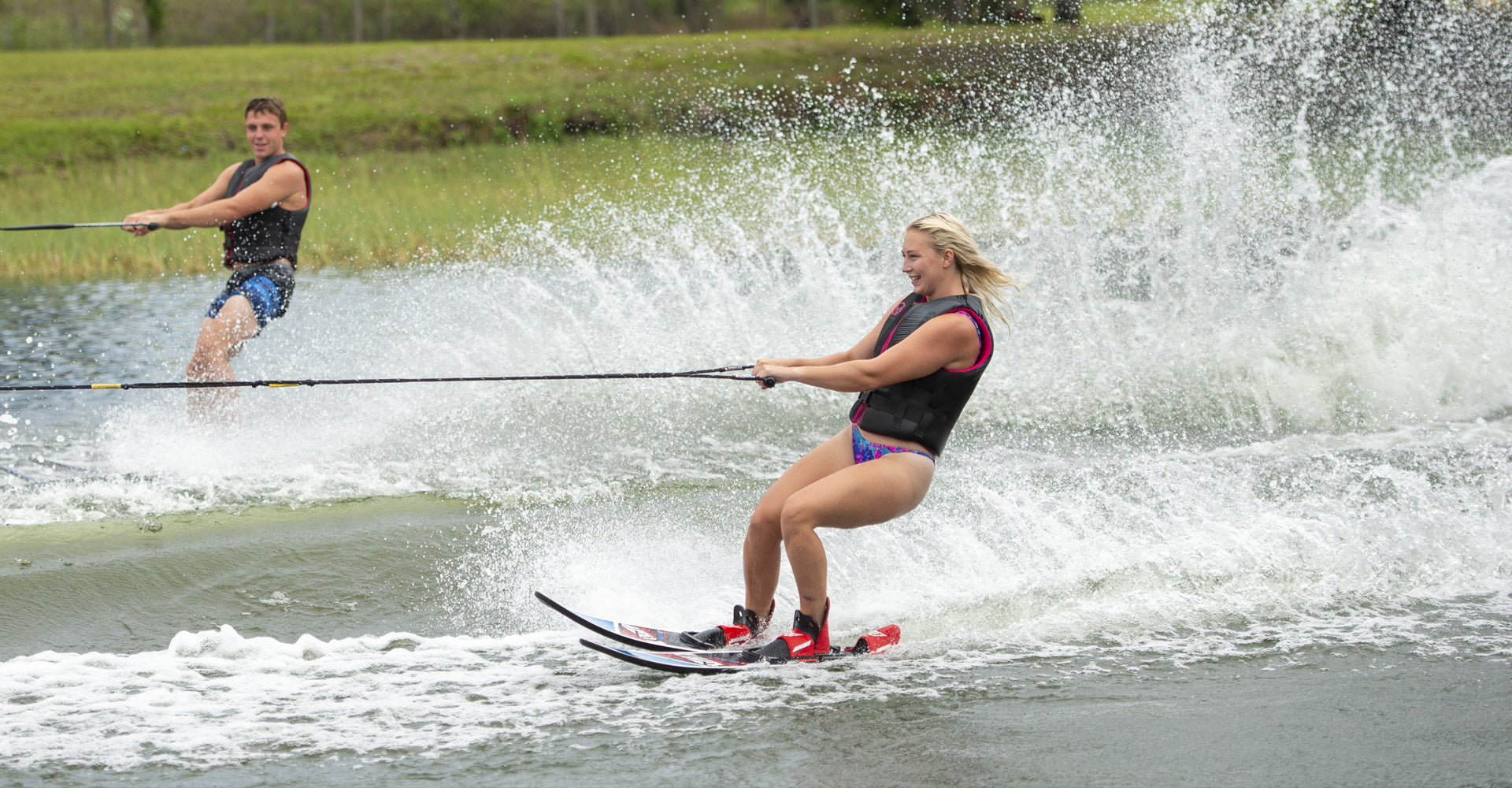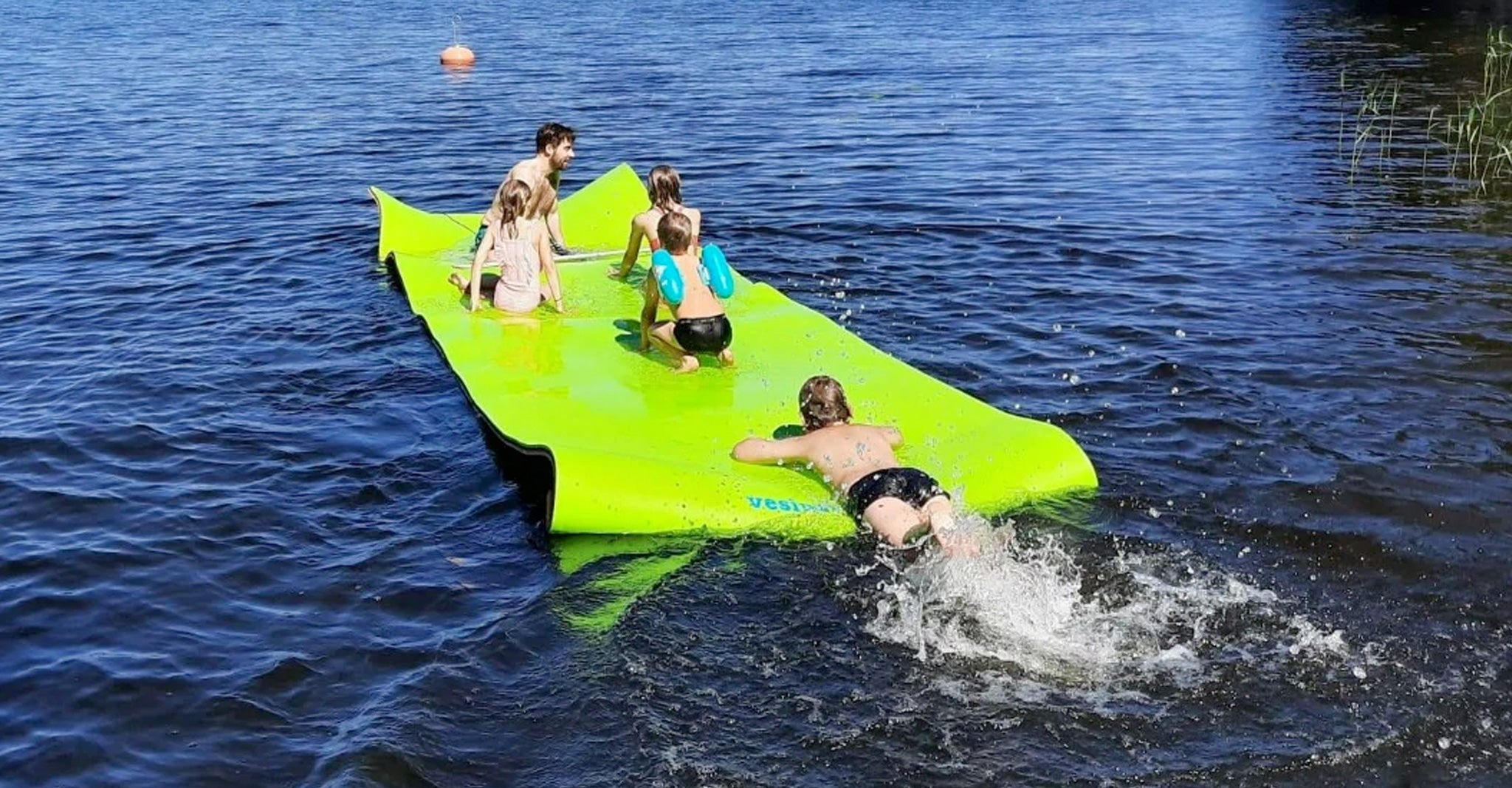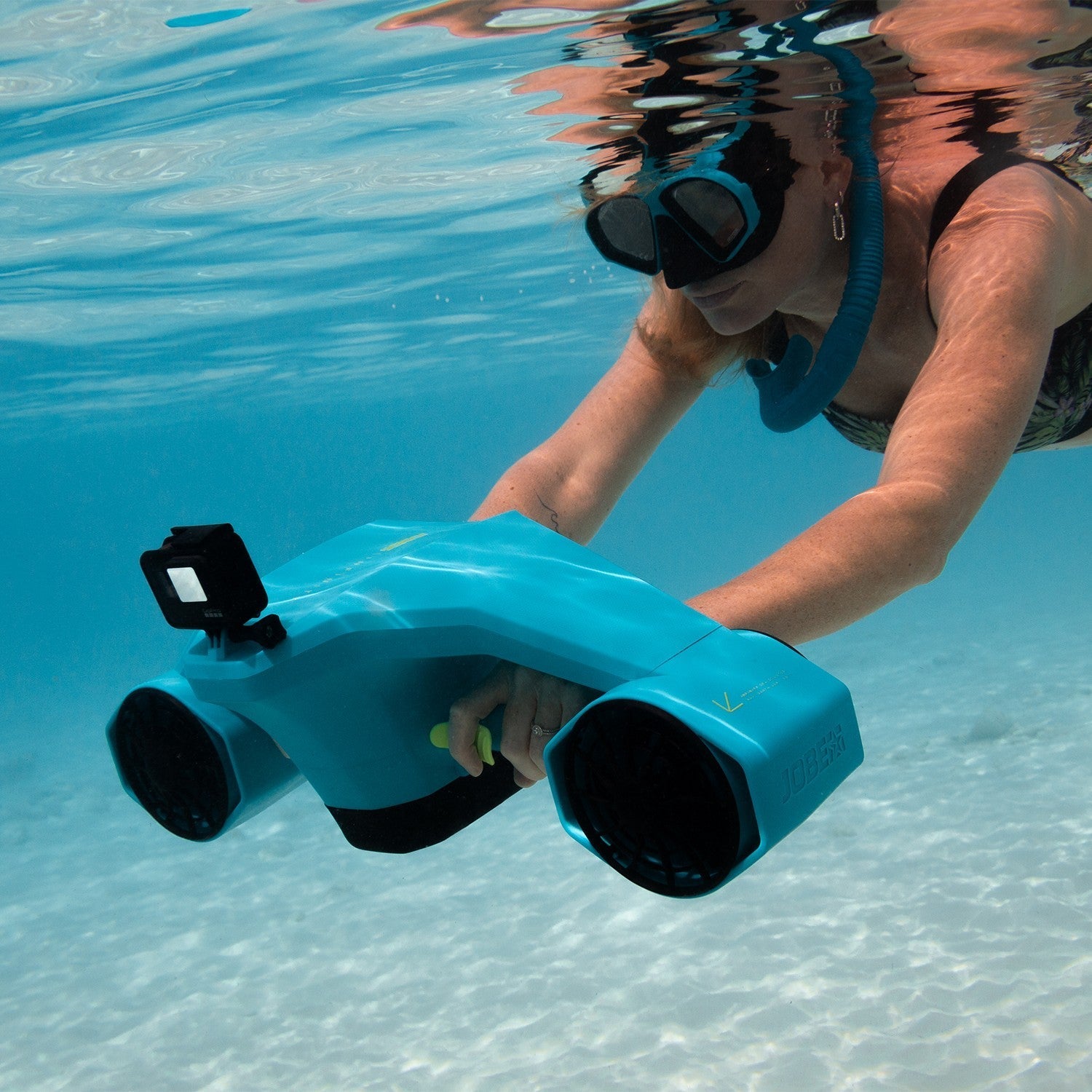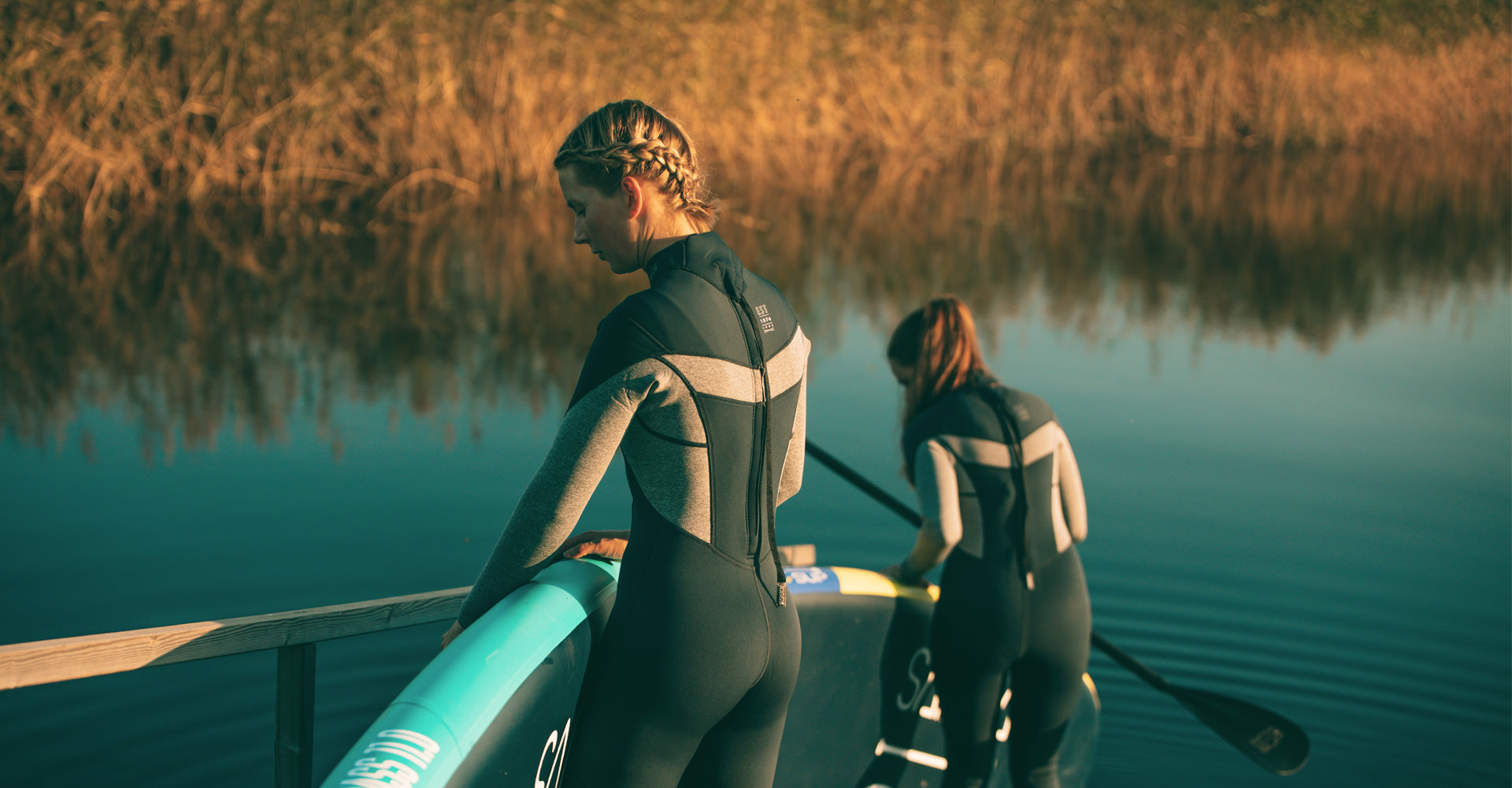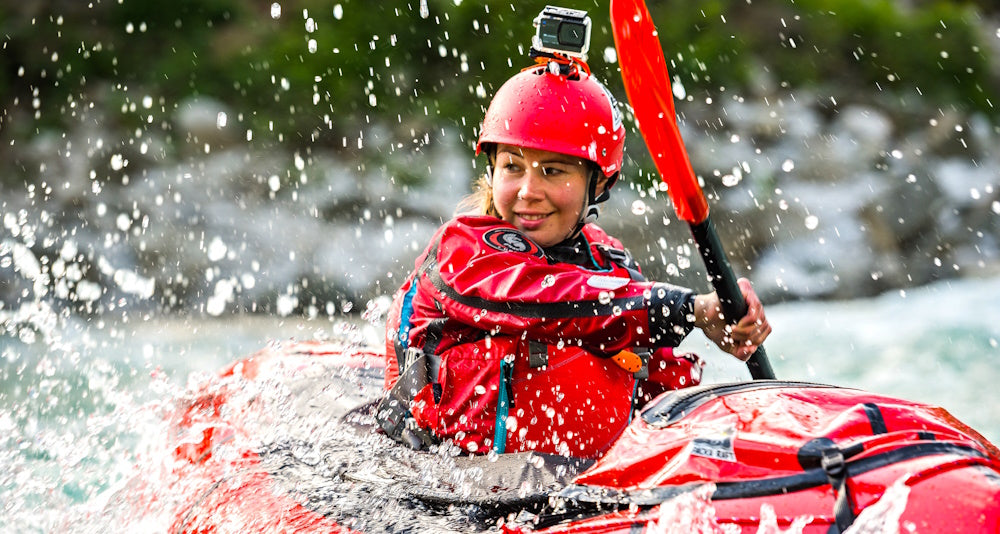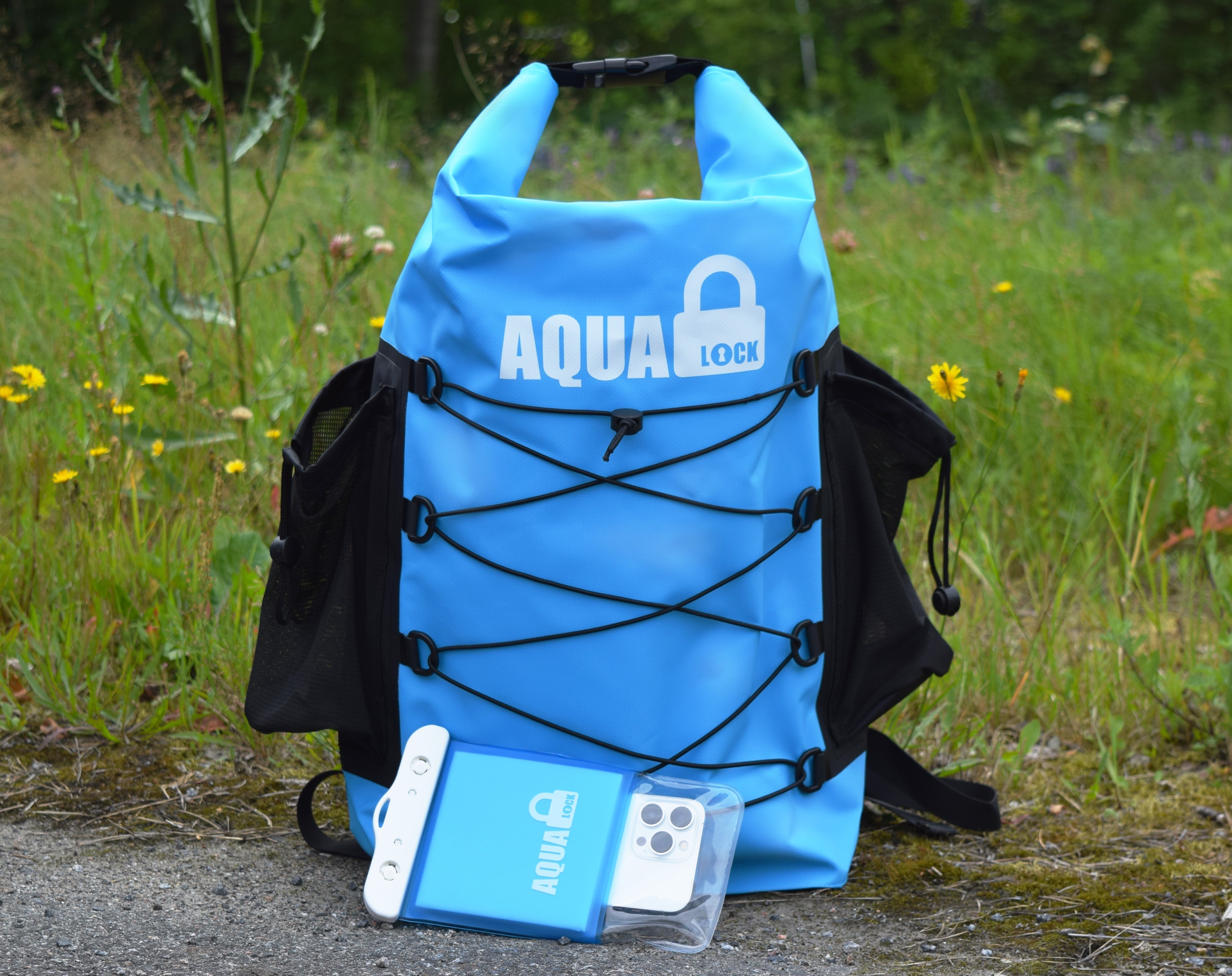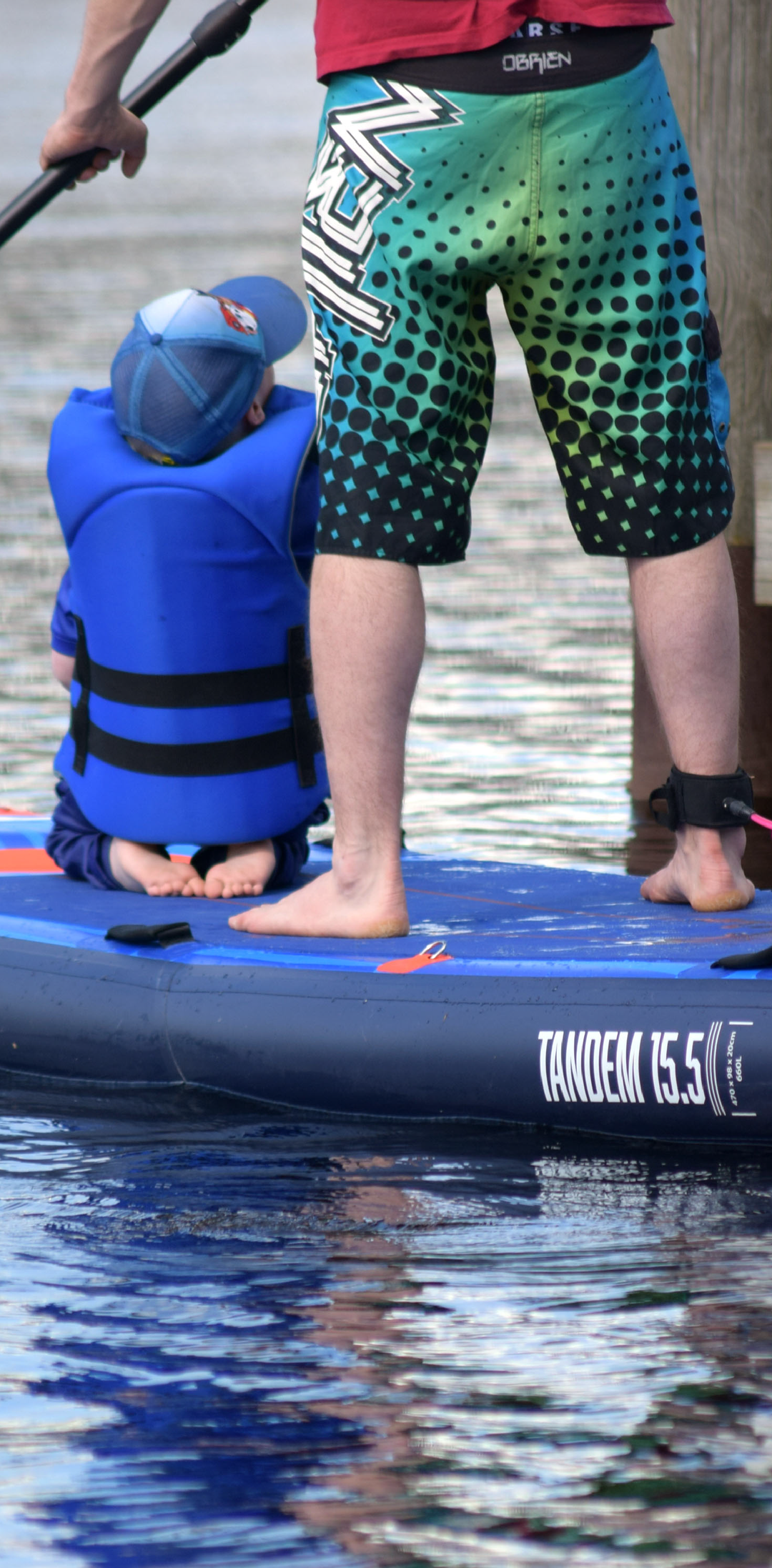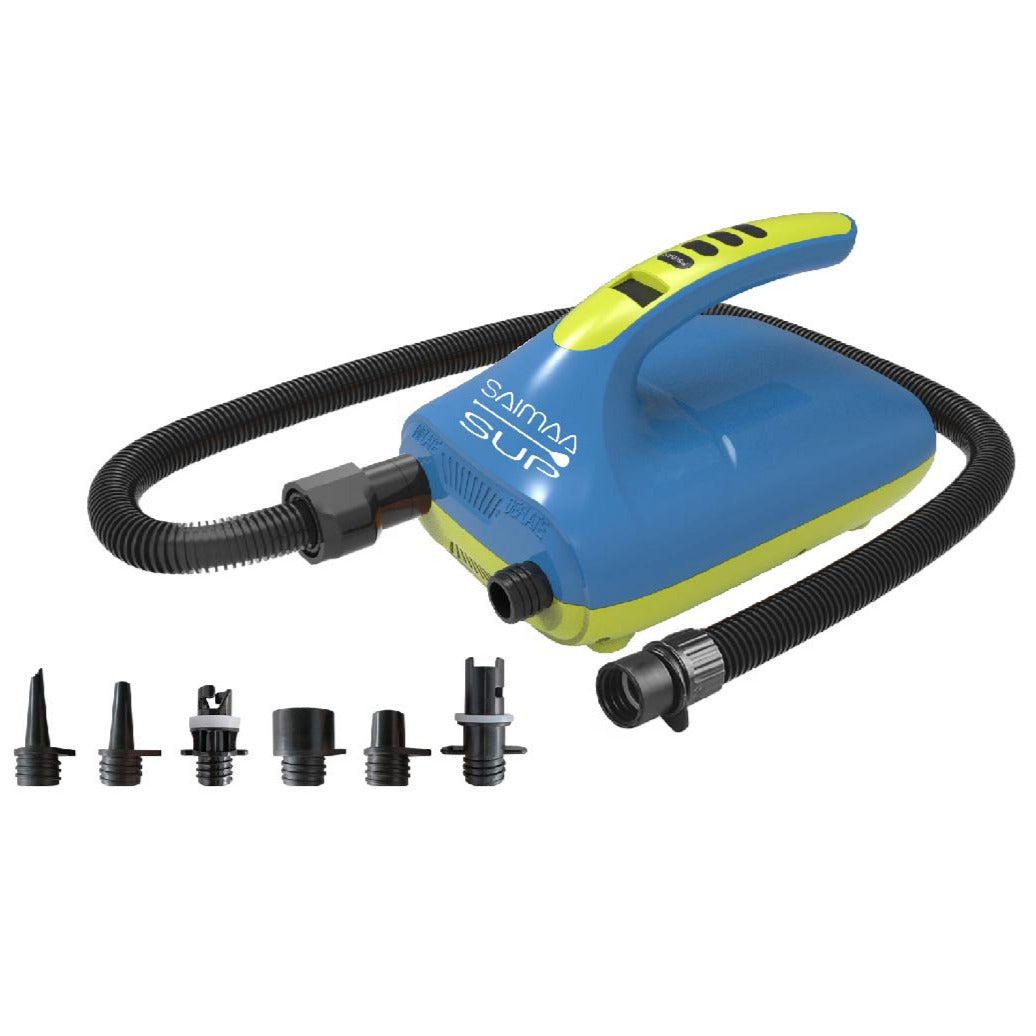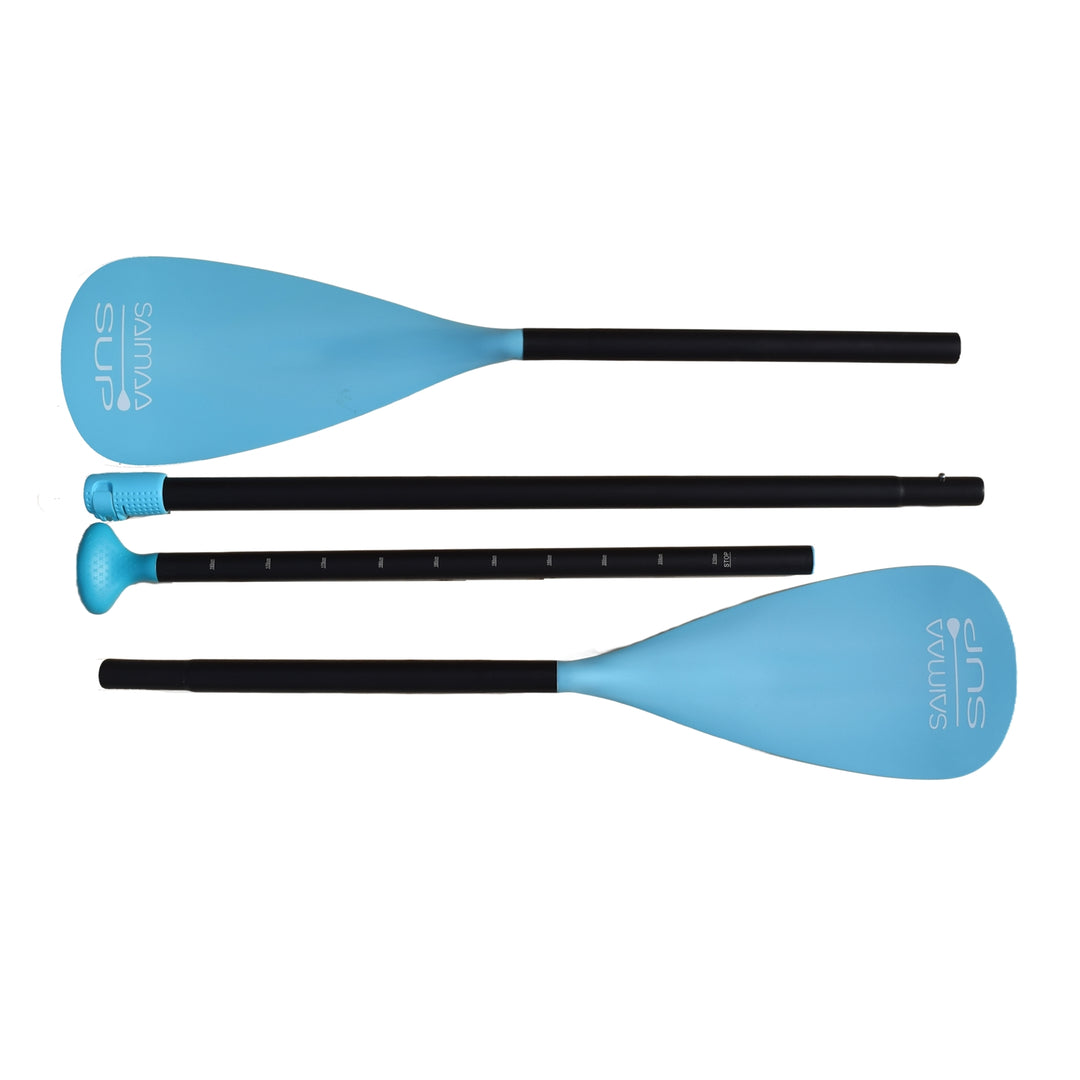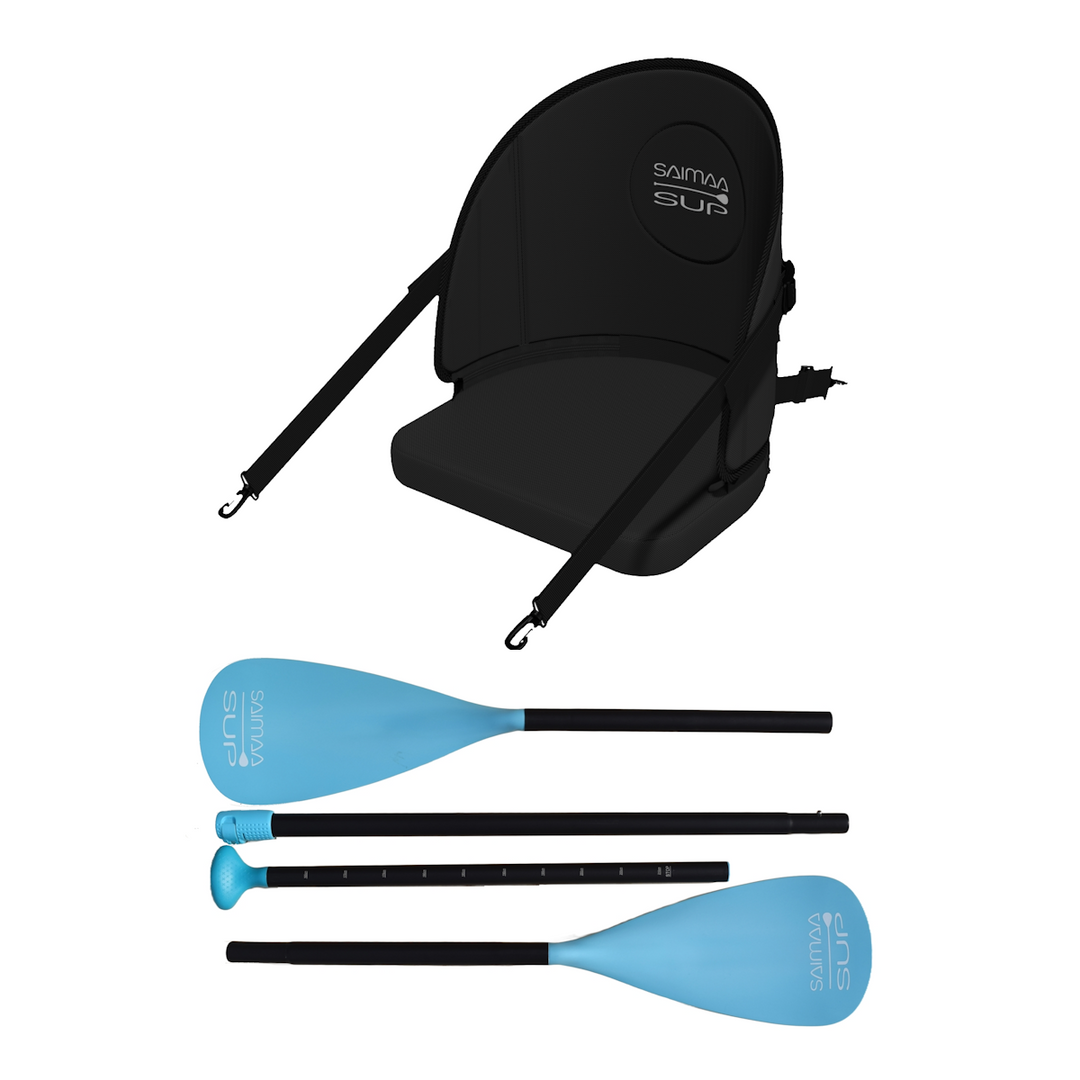safety guidelines for paddleboarding
Respect the sea, lake, or river — nature will always win if it wants to. Plan your trip according to your own skill level and endurance. If possible, paddle upwind first and return downwind.
Let your loved ones know where you’re going and when you plan to return.
Always wear a vest. Modern SUP vests are thin, comfortable, and stylish, allowing full freedom of movement. CE 50N–approved self-inflating belt models are also available if you want one that lets you stay safe and tan at the same time.
Take a fully charged phone in a waterproof case with you.
Be prepared for changing weather conditions. In cold water or chilly weather, wear a wetsuit or drysuit along with neoprene slippers, gloves, and a hood or hat. In the summer heat, remember to stay hydrated and protect yourself with sunscreen, a hat, and polarized sunglasses — anti-reflective lenses work especially well on the water.
Always attach a leash! In a strong gust of wind, your board can drift away quickly — much faster than you can swim.
When launching, kneel on the beach or beside the dock to enter the water safely. If you wobble or slip near the shore, you could hit your head on a rock or the dock. In shallow water, always start paddling from your knees.
Finally, remember that it’s easy to drift far downwind without noticing — so plan your route carefully to ensure you can make it back safely.
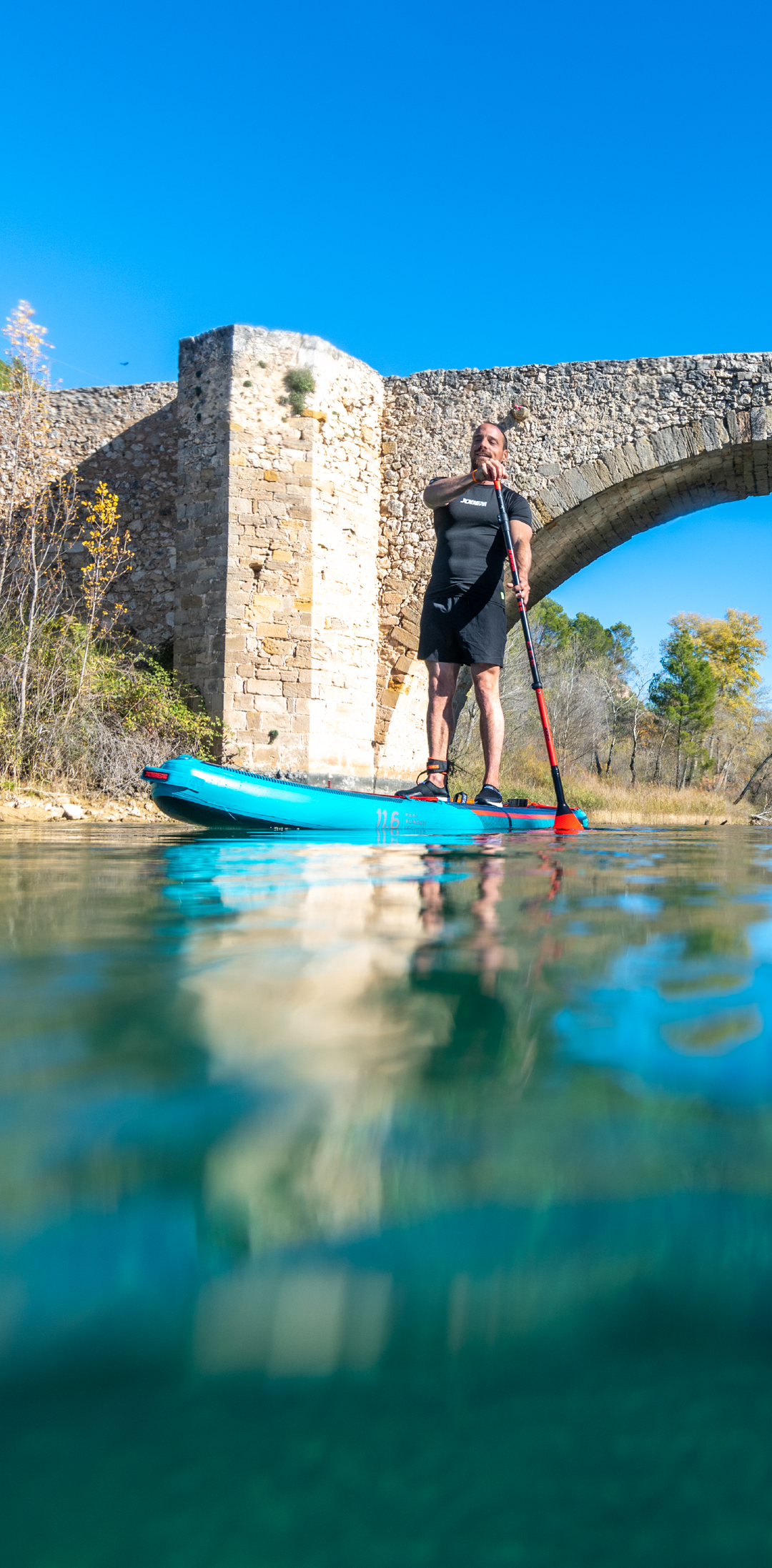
Rules of the Water – Safe Paddling Etiquette
Be aware of other people and vessels on the water. If you’re not familiar with the rules of navigation, take time to learn the basic water traffic regulations, for example from Traficom’s official website. In general, follow the same principle as on the road — keep to the right-hand side of the shipping lane.
SUP boards are classified as watercraft, which means they are subject to the same rules as boats. As a paddler, you must always give way to vessels over 12 meters in length, regardless of direction. When encountering smaller vessels under 12 meters, standard navigation rules apply, but as the smallest and most vulnerable craft, it’s often safest to yield and stay outside main waterways whenever possible. If you must use a shipping lane, stay as far to starboard (right side) as possible.
Remember: on the water, you do not have the right of way — you have the duty to avoid collisions. Always keep a good lookout and stay aware of your surroundings.
If you start feeling unsafe, kneel down early to lower your center of gravity. If you fall, aim to fall into the water, keeping your body spread out to stay afloat and to avoid hitting underwater obstacles.
If you fall off your board, your leash will keep it close. Try to hold on to your paddle, swim to the board, and position it crosswise in front of you. Place the paddle on top of the board, grab the far edge, and kick your feet near the surface as you pull yourself across the board. Once on, turn toward your paddle, stand up, and continue paddling.
When paddling in low light or at night, always use a white light visible from 360 degrees.
These guidelines may be freely shared online or in print when linked or attributed to the source:


